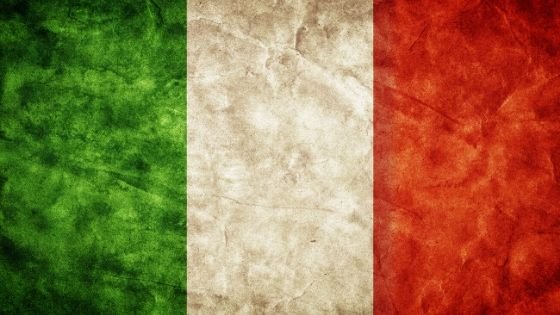The country of Italy is located in the south of Europe. Jutting out into the Adriatic and Mediterranean seas, this boot-shaped country is made up of a peninsula and several islands.
Italy has a long and rich history and has been a major influence on much of the world that we know today. Let’s find out more about Italy!

The Early History of Italy
The earliest civilizations known to have called Italy home were the Etruscans in the north and the Greeks in the southern regions. Not a lot is known about the ancient Etruscans. Their language and writing have only been partially translated. Much of their history comes from Greek writings.
This was about 900 BC. Over time, the Etruscans became part of the growing Roman empire.
The Roman civilization was the most famous and influential from Italy.
What began as a small town on the Tiber River grew and grew, eventually becoming a huge empire that controlled land in most of western Europe, and parts of the Middle East, North Africa, and southwest Asia.
The Romans took over a large part of Italy and they were ruled by kings until 509 BC. When the last king was overthrown, the people elected officials called senators to run the towns and cities. They established a constitution, laws, and a government system.
Rome’s republic system lasted until 27 BC. Then power struggles returned, and Caesar Augustus took over, naming himself emperor of Rome.
From Kingdom to Empire

The Roman Empire lasted for almost 1,000 years. With its far reaches, it had a pretty big influence on the cultures and countries that were under Roman rule.
Many governments around the world are modeled after the Roman Republic. Their concepts of law, like civil rights, personal property, contracts, and many others played a part in much of our modern-day laws.
The language they spoke was Latin. Many different languages evolved from Latin, and they’re called “Romance languages.” These include French, Spanish, Portuguese, Romanian, and, obviously, Italian! Even the English language borrows about 80% of its origin from Latin. Plus, a lot of the terms used in medicine, science, and law are Latin words.

The Romans were also pretty impressive with building things, like the Colosseum, which was built in 80 AD and could seat 50,000 people! They also built long-lasting roads, which are still used today, to speed up trade and move their armies faster.
The Fall of Rome
While the Roman empire was impressive for its time, it eventually was overthrown. Civil war broke out across the country. Rome was sacked in 410 AD and again in 476 AD. That last one brought an end to the era. The Roman Empire crumbled under the invasion of Goths and Visigoths from Germany.
With the fall of Rome came the period called the Dark Ages in Europe. This lasted for the next 500 years. That’s not to say that it was gloomy, or that people didn’t have candles and lanterns.
The Dark Ages meant that there wasn’t a lot of scientific and cultural advancement.
Things slowly began to change. Trade began to flourish again. People had more time and more money. Things like paintings, sculptures, and knowledge became important.
Lighting Up The Dark Ages
Eventually, Italy experienced the Renaissance. It started about halfway through the 14th century in Florence, Italy, and lasted for almost 300 years, spreading all over Europe.

Many famous works of art came from this period. Some of the most famous were created toward the end of the Renaissance. This is when Michelangelo painted the ceiling of the Sistine chapel. Depicting 9 scenes from the book of Genesis in the Bible, it took him 2 decades to complete! That’s a LOT of paint and a very stiff neck!
How Italy Got Its Name
Italy has been called something like “Italy” for about 3,000 years. Ancient Rome called the peninsula and the surrounding islands Italia. It initially only applied to the southern part of the peninsula.

There are several ideas where the name Italy came from. Some think that it may have come from the Greek word for calf, or baby cow-Vitulia. Another thought is that it came from an Oscan word related to cattle-Italus. A third idea is that it came from an Umbrian word for calf-Vi’teliu’. And a fourth idea is that it came from the Etruscan word for a bull-Italos.
No one’s really sure, but it certainly does seem to have an origin with cattle! It’s thought that because the region was rich with cattle, the name came about as a sort of symbolic association with the cattle ranchers.
The name Italy became official in 1861.
As a nation, Italy isn’t very old at all, despite the many people who have inhabited it for centuries. Expanded, contracted, split, and divided over hundreds of years, Italy became its own country on March 17, 1861.
Before that, it was a collection of city-states that was run by the Roman Catholic Church. After an upheaval led by a man named Giuseppe Garibaldi, Rome was overtaken again. It became the capital in 1870.
The unity brought in a monarchy and a parliament, which lasted until 1922. Then it fell into a dictatorship under Benito Mussolini. He maintained control until almost the end of World War II.
Afterward, Italy established itself as a republic in 1946 and has remained that way since.
Italy, through the ages, has been significant in so many things. From art to cuisine, its influence can be found in places all over.
For an authentic Italian dish, try Insalata Caprese, or Caprese Salad.

Super simple, easy, and fast. The salad from Capri was created in the 1950s by a little eatery called Trattoria de Vincenzo. Intended to be a light lunch for regulars to the café, the idea caught on and this recipe can be found all over Italy.
BONUS RECIPE!
Caprese Salad
1 Ball of Fresh Mozzarella
1 Large, Ripe Tomato
Fresh Basil
3-4 Tablespoons of Extra Virgin Olive Oil
Salt & Pepper
- Slice the mozzarella and the tomato into ¼ inch thick pieces.
- Layer the slices, alternating them. One slice of cheese to one slice of tomato.
- Shred the basil leaves and sprinkle them onto the slices.
- Drizzle it all with extra virgin olive oil and add a dash of salt and pepper.
- And that’s it! Grab a slice of cheese and tomato and bite into a taste of Italy.
You can explore more tastes of Italy with our eat2explore Italy Box! Or check out our Europian box. And if you have any allergies explore a featured country with no mixes.







